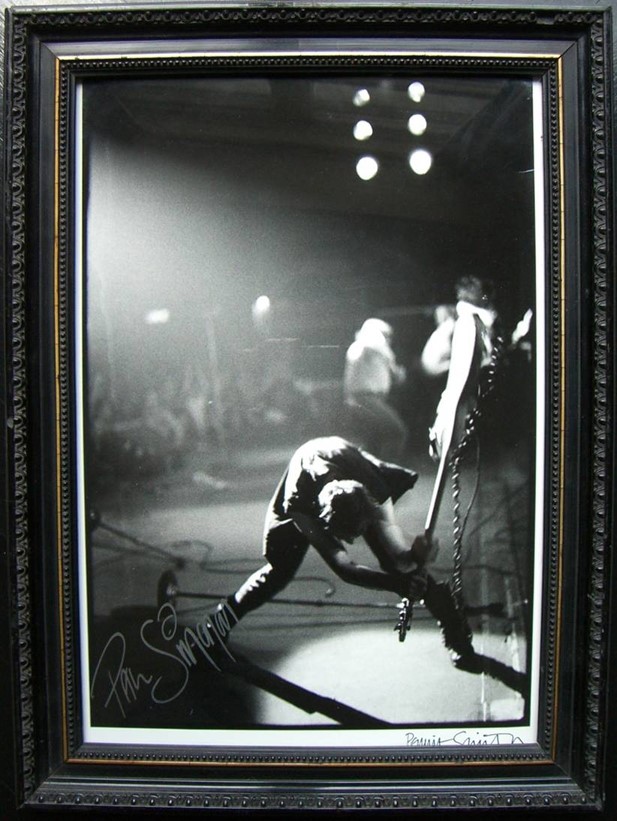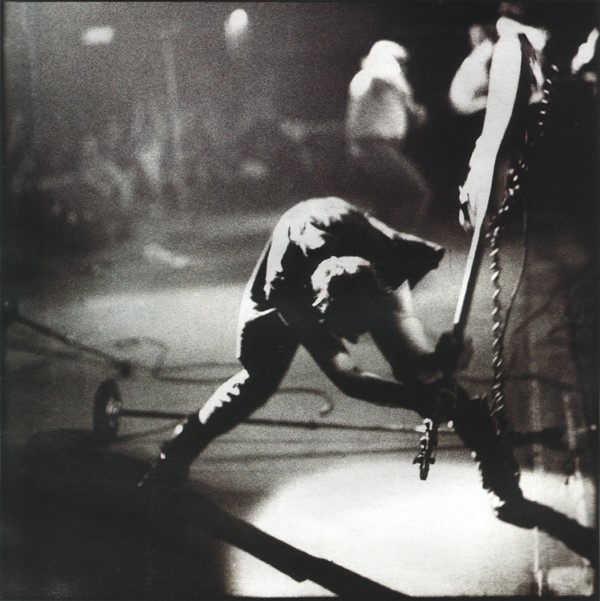Fashion designer Kinder Agguigini explains why an iconic shot of Paul Simonon smashing a Fender bass in 1979 is his Favourite Thing...

Designer Kinder Aggugini has described his trademark style as "when Coco Chanel met Sid Vicious"; an aesthetic that showed in the punked up florals and studded drop-waist tea dresses that stalked his S/S12 catwalk. These complimentary influences will come to the fore again in March, when he takes on the costumes for the English National Ballet’s revival of Diaghilev’s The Rite of Spring. With early sketches for the project showing sheer latticed body suits encrusted in beading, it will clearly be a distinctly Aggugini reappraisal of the traditional tutu.
In conversation with Stephen Jones for the recent edition of AnOther Magazine, Kinder discussed the importance of music as an integral inspiration for his eponymous line, and as the latest in a prestigious line of guest lovers, following Victoria Beckham and Rachel Weisz, he has selected a piece of punk iconography as his favourite thing. Pennie Smith’s shot of Paul Simonon smashing a Fender Precision bass, taken at The Clash’s New York show in 1979, went on to be used as the cover for London Calling and was chosen as Q Magazine’s Greatest Rock ‘n’ Roll Photograph of All-Time. Here Kinder reflects on how punk, rock and music of all genres has stimulated him throughout his career, and the day a meeting with Simonon left him totally tongue-tied.
What made you choose this signed image of Paul Simonon by Pennie Smith as your favourite thing?
It combines my love for photography and rock 'n' roll, it’s a seminal image and expresses what all of us have wished to do at some point, to release anger and frustration with an everyday tool in one liberating gesture. I think one day I might try that with the ironing board.
It was used for the iconic cover shot of The Clash’s London Calling album – are you a big fan of their music and what other music do you like? Is music important to you?
Massive fan! Love The Clash! I love music in general, anything with a thumping bass, from dub-step to classical. It’s an essential part of my day and it has been ever since I can remember. As a child I loved disco, and I still do: when I was 10 my brother gave me a double album he'd got from a friend - my parents enforced a low-sound policy in the house so I plugged in the headphones and cranked the volume up, and the vinyl was chipped so I had to lower the needle straight into the track. The sound that blasted in my head changed my life and I have been that way ever since. The album was Alive II from Kiss.
What is it about Paul Simonon that makes him so compelling to you and do you have any other icons – who and why?
Most of my icons are artists, writers or creative people. Normally I'm not starstruck but Paul was always my favourite out of The Clash, and when I was growing up he was a style reference point. When I went to have my picture signed (it was a birthday present and the signing was part of it) I met Paul for the first time. He opened the door and just stood there like James Dean fresh out of the grave - all I was able to say was "hello, yes, milk and one sugar, thank you, bye."
In the latest issue of AnOther Magazine you reminisce with Stephen Jones about your early club kid days in the late 70s and 80s, when bands like The Clash were leading English punk rock – how much does this era influence your work?
Well, in the 70's I was only 5 so clubbing was more in my head than a reality, by the time I was in my early teens all the great punk bands had already split up and when I started clubbing they were all into New Romantic. I went from pogoing in my bedroom to going out in full make up - I felt like I had skipped a beat and I naturally grew attached to all that was the No-Future generation. Clubbing played an important part in my growing up and to this day I draw a lot from all those experiences.
To view all of Kinder Aggugini's AnOther Loves, see his full Loves stream here.
Introduction by Tish Wrigley, Interview by Lucia Davies
